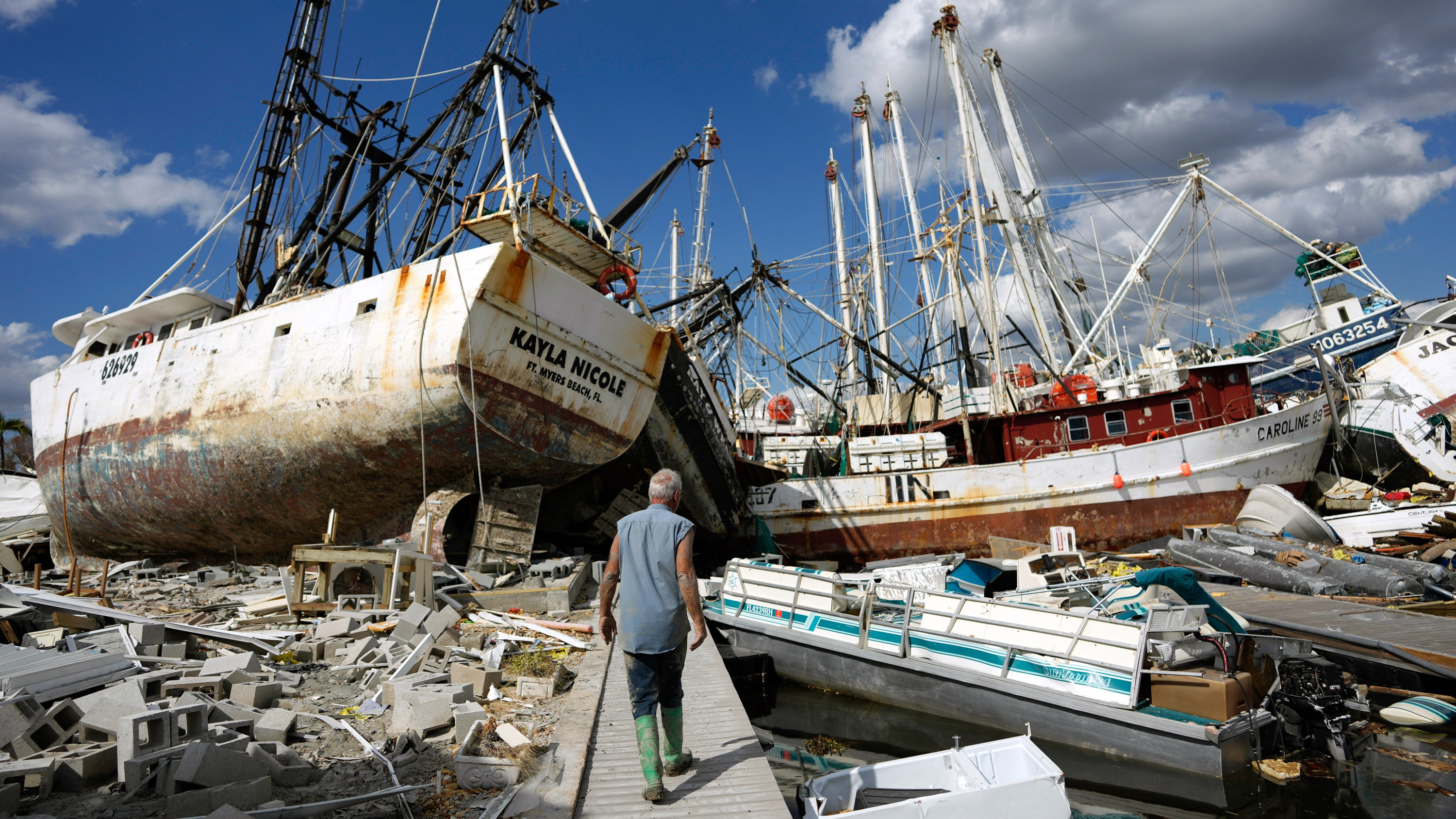Here’s what we know about hurricanes and climate change
More rainfall and intensifying storms are hallmarks of rising temperatures, but questions remain about some links between extreme storms and climate change.

MIT Technology Review Explains: Let our writers untangle the complex, messy world of technology to help you understand what's coming next. You can read more here.
It’s now possible to link climate change to all kinds of extreme weather, from droughts to flooding to wildfires.
Hurricanes are no exception—scientists have found that warming temperatures are causing stronger and less predictable storms. That’s a worry, because hurricanes are already among the most deadly and destructive extreme weather events around the world. In the US alone, three hurricanes each caused over $1 billion in damages in 2022. In a warming world, we can expect the totals to rise.
But the relationship between climate change and hurricanes is more complicated than most people realize. Here’s what we know, and—as Hurricane Idalia batters the Florida coast—what to expect from the storms to come.
Are hurricanes getting more common?
It might seem that there are far more storms than in the past, but we don’t really know for sure.
That’s because historical records are limited, with little reliable data more than a few decades old, says Kerry Emanuel, professor emeritus in atmospheric science at MIT. So it’s tough to draw conclusions about how the frequency of tropical cyclones (the umbrella term for storms that are called hurricanes, cyclones, or typhoons, depending on the region) is changing over time.
The best data comes from the North Atlantic region, Emanuel says, and it does appear that there are more hurricanes there than there used to be. Globally, though, some research suggests that the total number of tropical cyclones has gone down over the past few decades.
Scientists disagree on whether cyclogenesis, or storm formation, has changed over time and whether it might be affected by climate change in the future. Some climate models suggest that climate change will increase the total number of storms that form, while others suggest the opposite, says Karthik Balaguru, a climate and data scientist at the Pacific Northwest National Laboratory.
Are hurricanes getting stronger?
Globally, hurricanes have gotten stronger on average in the last four decades, and Emanuel says that to judge from what we know about climate change, the trend is likely to continue.
In one study, researchers examined satellite images from between 1979 and 2017 and found that an increasing fraction of storms reached the status of a major hurricane, defined as one with winds of over 110 miles per hour.
This trend of stronger storms fits with theoretical research going back to the 1980s from Emanuel and other climate scientists, who predicted that warming oceans would cause stronger hurricanes. Warming water provides more energy to storms, resulting in increased wind speeds.
As temperatures rise, “you’re going to load the dice toward these higher-end events,” says Phil Klotzbach, an atmospheric scientist and hurricane forecasting expert at Colorado State University.
That fits with recent research finding that hurricanes in the North Atlantic are intensifying more quickly, meaning they gain more wind speed as they move across the warming ocean.
The trend is most clear in the North Atlantic, but it also might be applicable around the world—another recent study found a global increase in the number of storms that undergo a very rapid intensification, with wind speeds increasing by 65 miles per hour or more within 24 hours.
Storms that get stronger quickly, especially close to shore, can be particularly dangerous, since people don’t have much time to prepare or evacuate.
How else does climate change affect hurricanes?
There are “compounding effects” from climate change that could influence hurricanes in the future, Balaguru says.
Climate change is causing sea levels to rise, making storm surges more severe and coastal flooding more likely and damaging. In addition, as air gets warmer it can hold more water, meaning there will be more rain from storms as climate change pushes global temperatures higher. That could all add up to more flooding during hurricanes.
There are other, less-understood ways that climate change might affect storms in the future. Storms are becoming more likely to stall in one place, dumping more rain on concentrated areas, as Hurricane Harvey did in Houston in 2017. Some studies link this effect to climate change too, though the connection is not as certain as others, Balaguru says. Regional changes in atmospheric circulation could also affect which areas are more likely to get hit by storms.
Even as hurricanes are getting stronger and more volatile, our ability to forecast both their path and their intensity has improved in recent years. Advances in supercomputers and AI forecasting could help officials better predict storms and give people more time to prepare. But these gains will only get us so far.
“Unfortunately, we’re getting better warnings, but we can’t get indefinitely better,” Emanuel says.
Deep Dive
Climate change and energy
The problem with plug-in hybrids? Their drivers.
Plug-in hybrids are often sold as a transition to EVs, but new data from Europe shows we’re still underestimating the emissions they produce.
Harvard has halted its long-planned atmospheric geoengineering experiment
The decision follows years of controversy and the departure of one of the program’s key researchers.
Decarbonizing production of energy is a quick win
Clean technologies, including carbon management platforms, enable the global energy industry to play a crucial role in the transition to net zero.
The hard lessons of Harvard’s failed geoengineering experiment
Some observers argue the end of SCoPEx should mark the end of such proposals. Others say any future experiments should proceed in markedly different ways.
Stay connected
Get the latest updates from
MIT Technology Review
Discover special offers, top stories, upcoming events, and more.